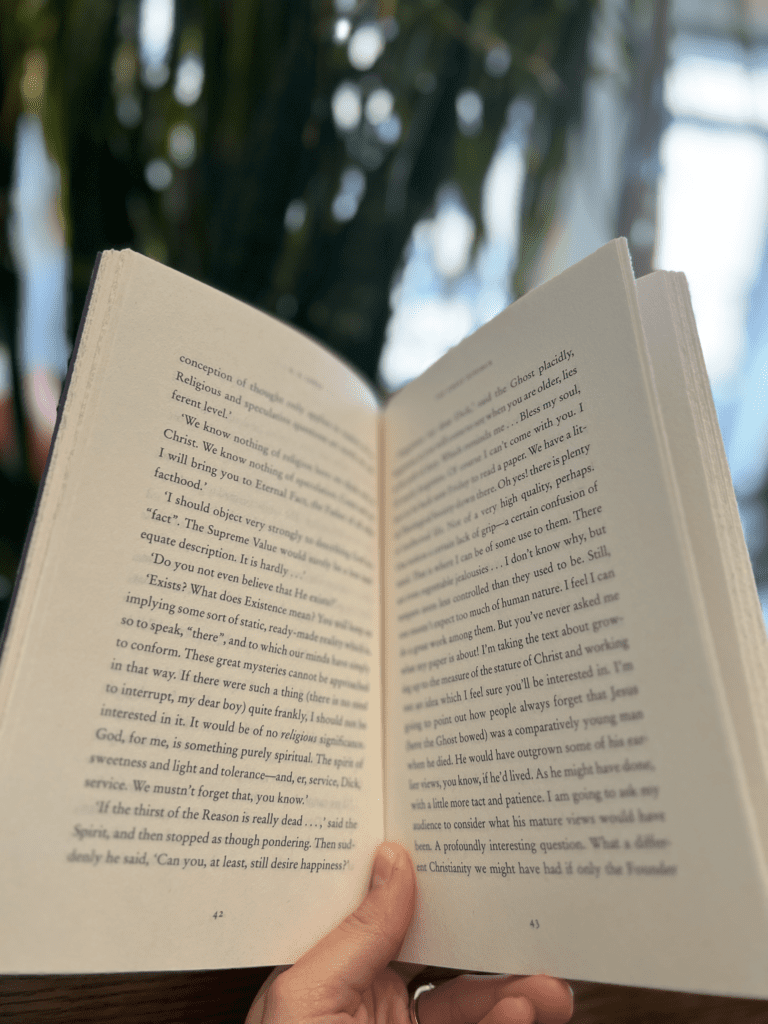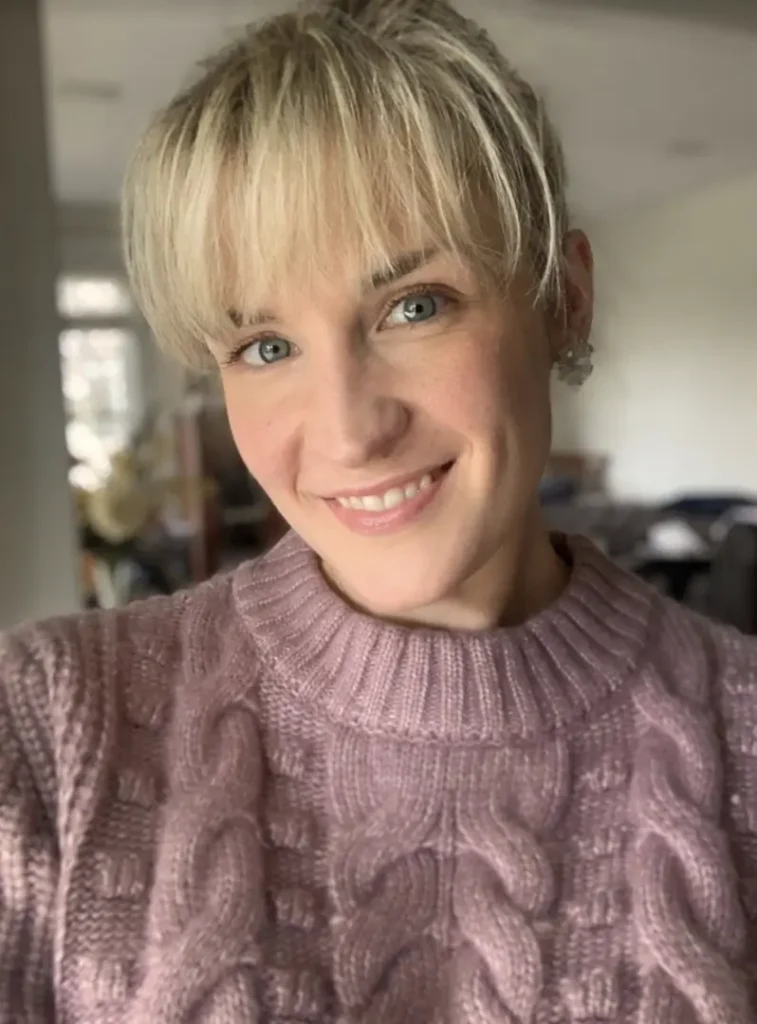Reclaiming the Joy of the Now: A Gift from the Sea
Written by Megan Keyser
The ocean: The majestic crash of waves, the rhythmic cadence of the tide, and the refreshing sea breezes all touch on the primal sensibilities of man, as well as our deepest longings for significance, serenity, and peace. It is no wonder that so many of us harken to the beach for rejuvenation, and it seems only fitting that our final work for the Year of the Giver centers on a destination so familiar to summer sojourners.
While I seem to garner bits of wisdom from all the literature encountered through Well-Read Mom, I must say that, of all the writings from this past Year of the Giver, Anne Morrow Lindbergh’s Gift from the Sea most profoundly stirred the desire for meaningful, practical change in my own life. Written over seventy years ago, Lindbergh’s almost prescient advice for combating the encroaching chaos of modern living (by favoring intentional, introspective living over fragmented frenzy) could not be more vital. One might think that, as information, conveniences, and ease have become ever more prevalent, moderns should have naturally increased in peace and a sense of purpose; however, if we are honest, all it takes is a cursory look around our culture to recognize the tell-tale signs of aimlessness, burnout, and discontentment.
Lindbergh, with her gift for poetic description and meditative prose, uses a variety of gathered seashells to encapsulate her thoughts on beach living. While each of her unique illustrations brings insight and understanding to the problems of modernity and the fundamental longings of the human heart, the initial shell “spoke” most profoundly to me. The “Channelled Welk”—ironically, one of my favorite shells—is described exquisitely, emphasizing its perfected “architecture” of a “diminutive winding staircase,” which “swell[s] like a pear in the center,” coiling upward “in a gentle spiral to the pointed apex” (16). This simple shell points to a zenith—a height to which its tiny former tenant sought refuge and protection from the dangers of the sea. If the lowliest of God’s creatures needs a focal point or pinnacle to aim, how much more so does man?
Meditating on the whelk’s intricacies, Lindbergh writes in words that speak so movingly: “I want a singleness of eye, a purity of intention, a central core to my life that will enable me to carry out these obligations and activities [of human, family life] as well as I can. I want, in fact—to borrow from the language of the saints—to live ‘in grace’ as much of the time as possible” (17). Though seven decades separate Lindbergh’s writing of these poignant words from my reading them, how her sentiments spoke to my very soul! It seems that, with each passing year, it becomes progressively more difficult to quell the tempestuous waves of modern life: bombarded by ever-growing to-do lists, swamped by texts, emails, and alerts, and shattered on the rocks of societal loneliness (paradoxically, amid a swirl of activity), many women often feel the sensation of drowning under the weight of responsibilities, while simultaneously questioning the fruitfulness of much that comprises modern living. As Lindbergh so aptly characterizes, the life of the modern woman is, in particular, oriented toward this whirling agitation: “What a circus act we women perform every day of our lives,” as we strive to faithfully juggle, to use contemporary jargon, “all the things” (20).
Of course, though our attempts to “do it all” may appear unbalanced or even comical at times, our motivation is not only laudable but also deeply rooted in femininity itself, which seeks to nurture and love others and is demonstrated through the “interests and duties, raying out in all directions from the central mothercore, like spokes from the hub of a wheel” (22). Whatever progressive thought may suggest about the lack of universality in female personality traits, it seems rather apparent that the majority of women possess a pronounced sensitivity to the feelings, needs, and preferences of others, which results in empathetic service—”sensitive like a spider’s web to each breeze that blows”—those we love (22). While admirable in intention, this seemingly tireless reserve of devoted care certainly has the potential for misuse if we do not learn to channel our energies purposefully. In our modern American culture, the feminine capacity for concern is buckling under the pounding crash of ubiquitous information streams, a lack of silence, and buzzing overstimulation. Our gift of being moved to compassion and service cannot weather the pull of currents ripping us to emotional pieces as we wrestle with the knowledge of strife from all corners of the world while addressing the seemingly limitless demands of our personal family life. This business, Lindbergh cautions, “does not bring grace; it destroys the soul” (20).
Most women feel this: the suffocating encroachments of modern life upon the significant and the serene. But how can we possibly escape it? Though it has sometimes sounded tempting, we, as wives, mothers, sisters, and friends, cannot abandon our responsibilities and run away to a remote island in search of simplicity. Yet, as women seeking something beyond the transient, “How much we need, and how arduous of attainment is that steadiness preached in all rules for holy living. How desirable and how distant is the ideal of the contemplative, artist or saint—the inner inviolable core, the single eye” (22). Lindbergh worried, and rightly so, that modern living imperiled “the here, the now, the individual and his relationships,” because in our frenzied and rather aimless attempts to “gain” so much that we already possess is forfeited: “The present is passed over in the race for the future; the here is neglected in favor of the there; and the individual is dwarfed by the enormity of the mass” (118).

Yet, we don’t need to resign ourselves to this bleak fate. If the goal is to prune away the extraneous—the spiritual and emotional banality of our lives—to weed out the distractions and refocus on the eternal, perhaps we, as readers, are already taking a vital step toward intentionality. Each time we pick up a thought-provoking book, are we not fostering meaningful contemplation in a world dominated by superficiality? When we choose the solitude of a half hour of literature over loud entertainment, are we not emphasizing the human need for meditative silence? When we come together to discuss our deepest thoughts, insights, and feelings with each other, are we not elevating the dignity of each woman within the context of community? As women, but especially as women who ponder, who seek, who yearn, we can recapture our singleness of focus:
“The here, the now, and the individual have always been the special concern of the saint, the artist, the poet, and—from time immemorial—the woman. In the small circle of the home she has never quite forgotten the particular uniqueness of each member of the family; the spontaneity of now; the vividness of here…These are the individual elements that form the bigger entities like mass, future, world…They are the drops that make up the stream” (119).
We may each offer only tiny “drops” to the world, but those drops do, in fact, “make up the stream.” What if we went a step further and sought to offer these drops with increasing purity of intention and depth of love by not allowing ourselves to get swept away in the tide of spiritual and intellectual mediocrity? I have faith that we, as Lindbergh herself hoped, will “find again some of the joy of the now, some of the peace in the here, some of the love in me and thee which go to make up the kingdom of heaven on earth” (120).

Megan Keyser
Originally hailing from Pittsburgh, Pennsylvania, Megan is a 2006 Hillsdale College graduate with a degree in Classical Studies. These days, Megan thrives on the challenges and joys of her role as a Catholic, stay-at-home mother, who heads a chapter of the Well-Read Mom, dabbles in social commentary and other writing pursuits, and advocates for the pro-life cause. Despite the inevitable chaos of large family life, Megan is thankful for her lively brood and relishes juggling household responsibilities, babies in diapers, and, of course, a good book. She resides in Noblesville, Indiana, with her husband, Marc, an engineer in the energy industry, and their ten children: five sons and five daughters, ages 15 years to 6 months old.
About Well-Read Mom
In Well-Read Mom, women read more and read well. Our hope is to deepen the awareness of meaning hidden in each woman’s daily life, elevate the cultural conversation, and revitalize reading literature from books. If you would like to have us help you select worthy reading material, we invite you to join and read along with us. We are better together! For information on how to start or join a Well-Read Mom group visit our website wellreadmom.com

